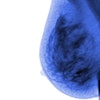For patients who have undergone breast conservation therapy, MRI may be the best bet for excluding lesions, but not for differentiating them, according to a researcher from University Hospital in Tuebingen, Germany.
"In this longitudinal study of patients after breast conservation therapy without local recurrence, MRI gained the highest confidence in excluding lesions even early after treatment," said Dr. Marcus Mueller-Schimpfle at last year’s RSNA conference. "Whenever the patient was conserved, no imaging modality performed well in lesion differentiation."
In this patient population, 20 women who had undergone breast conserving surgery were prospectively examined before and after adjuvant radiotherapy (at 6, 12, and 18 months) with dynamic contrast-enhanced MRI, mammography, and ultrasound. All 240 examinations were read by a single reader prospectively, and retrospectively by two readers who were blinded to the results. They evaluated image quality, parenchyma, lesion detection, and lesion differentiation for the treated and non-treated breast.
"The gold standard was all information from all imaging modalities together after 18 months," Mueller-Schimpfle said. "We calculated the kappa statistics concerning agreement between observers and between methods."
The prospective reading of MRI exams excluded a lesion with high confidence in 48% of the cases. A lesion was excluded by mammography in 15% of the patients, while ultrasound ruled out a lesion in 35%. In the retrospective reading, MRI excluded a lesion in 43% of the patients.
The prospective reading detected a lesion with high confidence in 21% of the cases with MRI, and in 45% using both mammography and ultrasound. Based on MRI, the prospective reader had high confidence that 30% of the lesions were benign. However, the retrospective readers had high confidence that only 13% of the MRI exams were benign.
The highest number of indeterminate cases was diagnosed with ultrasound, at 44%, Mueller-Schimpfle said.
"Ultrasound is good for detecting distal recurrences, but the problem is the scar region," he said. "Mammography is good for surveillance. MRI has the highest confidence in excluding lesions, even early after treatment. The problem is determining the correct indications for MRI."
Mueller-Schimpfle said his group has applied for a grant to conduct a long-term follow-up study with a larger patient population.
By Shalmali PalAuntMinnie.com staff writer
January 26, 2001
Related Reading
MRI best for evaluating breast tumors before surgery, January 26, 2000
Click here to post your comments about this story. Please include the headline of the article in your message.
Copyright © 2001 AuntMinnie.com



















